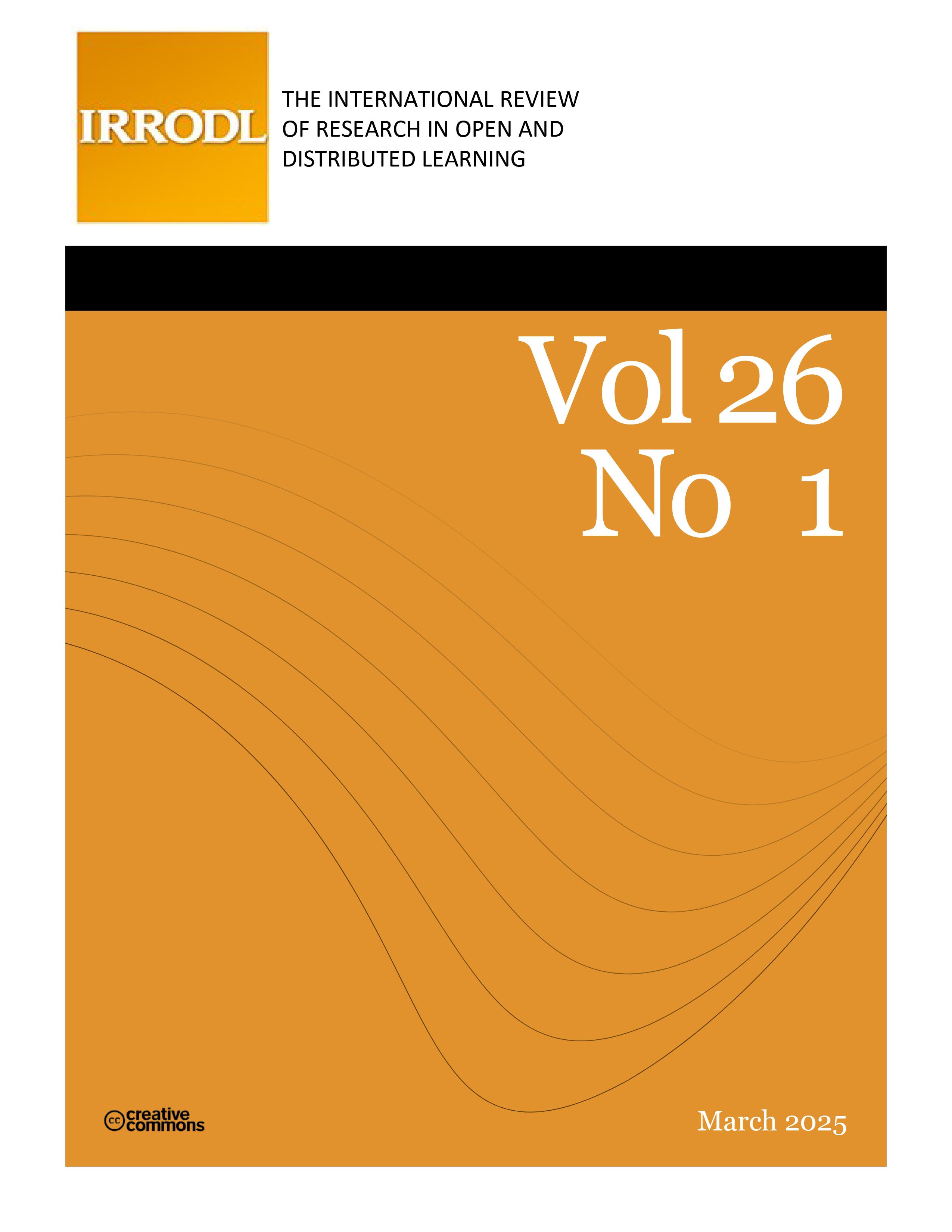Abstracts
Abstract
The aim of this study was to implement on-the-job training (OJT) in a distance learning environment. To achieve this, job analyses were conducted on spring semester beekeeping activities at a vocational school in the eastern Anatolia region of Türkiye, and content and activities were designed with an OJT environment prepared. Participants received a task video and checklist to be completed weekly during the relevant week of the season. They were required to record and send videos while performing tasks, with feedback provided, and they were encouraged to participate in expert/peer communication activities. Initially, participants completed tasks correctly at an 80% rate, which increased to 85% after feedback. Task completion levels were examined, showing higher levels for short, simple, and less risky tasks. The application showed a positive effect on academic achievement in favor of the final test.
Keywords:
- on-the-job training,
- distance education,
- skills teaching,
- distance vocational education,
- Türkiye
Appendices
Bibliography
- Abbad, G. da S., Corrêa, V. P., & Meneses, P. P. M. (2010). Avaliação de treinamentos a distância: Relações entre estratégias de aprendizagem e satisfação com o treinamento [Distance training evaluation: Relationships between learning strategies and training satisfaction]. RAM. Revista de Administração Mackenzie, 11(2), 43–67. https://doi.org/10.1590/S1678-69712010000200003
- Ahadi, S., & Jacobs, R. L. (2017). A review of the literature on structured on-the-job training and directions for future research. Human Resource Development Review, 16(4), 323–349. https://doi.org/10.1177/1534484317725945
- Basariya, S. R., & Vasanthi, S. (2019). Pros and cons of on-the-job training versus off the job training. International Journal of Scientific & Technology Research, 8(10), 671–674. https://www.researchgate.net/profile/S-Rabiyathul-Basariya/publication/343392046_Pros_and_Cons_of_On_the_Job_training_versus_Off_the_Job_Training/links/5f27d7eb92851cd302d5848c/Pros-and-Cons-of-On-the-Job-training-versus-Off-the-Job-Training.pdf
- Borman, W. C., & Motowidlo, S. M. (1993). Expanding the criterion domain to include elements of contextual performance. In W. C. Borman & S. M. Motowidlo (Eds.), Personnel selection in organizations (pp. 71–98). Psychology Faculty Publications.
- Dahlgaard, J. J., Kristensen, K., & Kanji, G. K. (1995). Total quality management and education. Total Quality Management, 6(5), 445-456. https://doi.org/10.1080/09544129550035116
- Dyson, L. E., Litchfield, A., Lawrence, E., Raban, R., & Leijdekkers, P. (2009). Advancing the m-learning research agenda for active, experiential learning: Four case studies. Australasian Journal of Educational Technology, 25(2). https://doi.org/10.14742/ajet.1153
- Harun, M. H. (2001). Integrating e-learning into the workplace. The Internet and Higher Education, 4(3–4), 301–310. https://doi.org/10.1016/S1096-7516(01)00073-2
- Hicks, E., Bagg, R., Doyle, W., & Young, J. D. (2007). Canadian accountants: Examining workplace learning. Journal of Workplace Learning, 19(2), 61–77. https://doi.org/10.1108/13665620710728457
- Jensen, L. X., Bearman, M., & Boud, D. (2021). Understanding feedback in online learning–A critical review and metaphor analysis. Computers & Education, 173, Article 104271. https://doi.org/10.1016/j.compedu.2021.104271
- Karačić Zanetti, J., Brown, M., Viđak, M., & Marušić, A. (2023). Diplomatic response to global health challenges in recognizing patient needs: A qualitative interview study. Frontiers in Public Health, 11, Article 1164940. https://doi.org/10.3389/fpubh.2023.1164940
- Kaşıkçı, E. B., & İzmirli, S. (2024). Unpacking the relationship between online student engagement and online self-regulation in higher education. Participatory Educational Research, 11(4), 198-214.
- Kim, J. H., & Lee, C. (2001). Implications of near and far transfer of training on structured on-the-job training. Advances in Developing Human Resources, 3(4), 442–451. https://doi.org/10.1177/15234220122238508
- Klein, H. J., Noe, R. A., & Wang, C. (2006). Motivation to learn and course outcomes: The impact of delivery mode, learning goal orientation, and perceived barriers and enablers. Personnel Psychology, 59(3), 665–702. https://doi.org/10.1111/j.1744-6570.2006.00050.x
- Martins, L. B., Zerbini, T., & Medina, F. J. (2019). Impact of online training on behavioral transfer and job performance in a large organization. Revista de Psicología Del Trabajo y de Las Organizaciones, 35(1), 27–37. https://doi.org/10.5093/jwop2019a4
- Matsuo, M. (2014). Instructional skills for on-the-job training and experiential learning: An empirical study of Japanese firms. International Journal of Training and Development, 18(4), 225–240. https://doi.org/10.1111/ijtd.12035
- Morrison, R. F., & Brantner, T. M. (1992). What enhances or inhibits learning a new job? A basic career issue. Journal of Applied Psychology, 77(6), 926–940. https://doi.org/10.1037/0021-9010.77.6.926
- Na, K. (2021). The effect of on-the-job training and education level of employees on innovation in emerging markets. Journal of Open Innovation: Technology, Market, and Complexity, 7(1), Article 47. https://doi.org/10.3390/joitmc7010047
- Rothwell, W. J., & Kazanas, H. C. (2011). Mastering the instructional design process: A systematic approach (4th ed.). John Wiley & Sons.
- Sablić, M., Mirosavljević, A., & Škugor, A. (2021). Video-based learning (VBL)—Past, present and future: An overview of the research published from 2008 to 2019. Technology, Knowledge and Learning, 26(4), 1061–1077. https://doi.org/10.1007/s10758-020-09455-5
- Sangeeta, & Tandon, U. (2021). Factors influencing adoption of online teaching by school teachers: A study during COVID‐19 pandemic. Journal of Public Affairs, 21(4), Article e2503. https://doi.org/10.1002/pa.2503
- Seymour-Walsh, A. E., Weber, A., Bell, A., & Smith, T. (2020). Teaching psychomotor skills online: Exploring the implications of novel coronavirus on health professions education. Rural and Remote Health, 20(4), Article 6132. https://doi.org/10.22605/RRH6132
- Sun, P.-C., Tsai, R. J., Finger, G., Chen, Y.-Y., & Yeh, D. (2008). What drives a successful e-learning? An empirical investigation of the critical factors influencing learner satisfaction. Computers & Education, 50(4), 1183–1202. https://doi.org/10.1016/j.compedu.2006.11.007
- Vasanthi, S., & Basariya, S. R. (2019). On the job training implementation and its benefits. International Journal of Research and Analytical Reviews (IJRAR), 6(1), 210–215. https://ijrar.org/papers/IJRAR19XP034.pdf
- Warr, P., Allan, C., & Birdi, K. (1999). Predicting three levels of training outcome. Journal of Occupational and Organizational Psychology, 72(3), 351–375. https://doi.org/10.1348/096317999166725
- Weng, C., Tsai, C.-C., & Weng, A. (2015). Social support as a neglected e-learning motivator affecting trainee’s decisions of continuous intentions of usage. Australasian Journal of Educational Technology, 31(2). https://doi.org/10.14742/ajet.1311
- Van Zolingen, J.S., Streumer, J. N., De Jong, R., & Van der Klink, M. R. (2000). Implementing on-the-job training: Critical success factors. International Journal of Training and Development, 4(3), 208–216. https://doi.org/10.1111/1468-2419.00108

